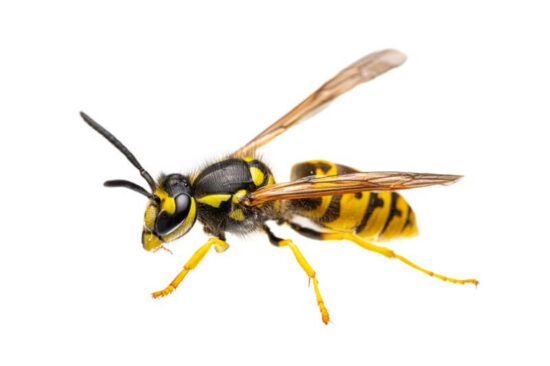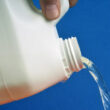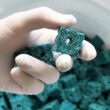Many people are familiar with adult wasps (and the chaos they can cause). But what do baby wasps look like?
This handy guide will teach you everything you need to know about baby wasps and what they look like. Knowing how to identify them will help you stop these insects from becoming a nuisance!
Table of Contents
What Do Baby Wasps Look Like?
When most people think of wasps, they picture those full-grown adults with monstrous stingers and irritating nests. But what do baby wasps look like?
Like any other living creature, wasps have to start their life cycle somewhere and grow into adults. But you usually don’t see the baby wasps out and about. That’s because they’re not “babies” in the traditional sense.
You see, wasps go through a unique life cycle.
As winter comes to a close and warm spring air rolls around, queen wasps come out of hiding. They go into a quasi-hibernation state during the winter and hole up to stay safe from the cold. Once spring arrives, they emerge to lay eggs and start a colony!
Here’s where the magic begins.
Wasps start their lives once they hatch from their eggs. You can think of this as the “baby” stage. However, these baby wasps are nothing more than hungry larvae.
Pay attention to the design and construction if you ever get close enough to observe a wasp nest. Each cell houses an egg that eventually hatches and allows the larvae to emerge.
Larvae are small, worm-like creatures. They can’t do much to move around, so they stay in the cells and wait for caretakers to feed them. The baby wasps resemble tiny maggots with insatiable appetites.
They continue to grow in the cells until they’re ready to pupate. This usually occurs around two weeks after hatching. The larvae go through about five growth-molt cycles before entering the pupation phase.
Pupation is the next life cycle. The baby wasps spin a little protective cap to go over the cell and seal themselves in.
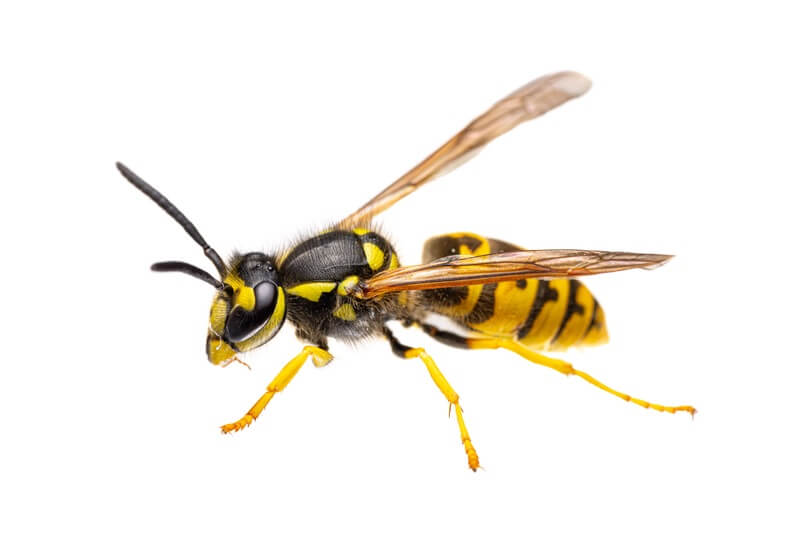
This stage is one of the most fascinating. Wasps go through the same type of metamorphosis as butterflies do. Their old larva body dies, liquifies, and slowly transforms into the wasp we know!
The baby wasp is defenseless when they are pupae, and there’s a good chance you won’t see them unless you destroy a nest. But if you do manage to see one, you may start to see the adult form take shape.
As a pupa, baby wasps slowly develop their segmented bodies, bulbous abdomens, long antennae, and thin legs. Depending on when you see the pupa during the development cycle, it might appear all white. The color comes in last, making the growing wasp look almost like a mummy version of their adult counterparts.
Expert Tip: The pupation cycle only lasts about 12 days. At that point, the wasp is no longer a baby. It’s a fully formed young adult ready to emerge and become a pest!
How Small Are They?
Here’s the thing about baby wasps: There’s not much size difference once they reach their complete form.
You might see slightly smaller wasps. They likely freshly emerged from the pupae stage. But even then, the size difference in mature wasps is negligible.
Most are in the neighborhood of 1.5 inches long. However, the exact size depends entirely on the species. Smaller wasps exist and can be less than a half-inch in length.
If you’re wondering about the size of an actual baby wasp in the larva stage, they typically reach lengths of an inch before starting the pupation cycle. The larvae are pretty tiny after hatching from their eggs. But they rapidly increase in size when living in the nest, thanks to the dedicated caregivers constantly feeding them.
The wasps can continue to grow as they pupate. Once they are ready to emerge as adults, most wasps are full-grown. They might get a little bigger, but the change is subtle.
At What Age Are Wasps Considered Babies?
Using the term “baby wasp” isn’t the most accurate description of what a young wasp is.
These insects are not like mammals. They don’t start as traditional babies and continue to grow into adults. Instead, they have defined life cycles with dramatic changes in between.
As mentioned earlier, it all starts at the egg and larva stage. After the queen deposits eggs into the nest cells, they continue to develop until the larvae emerge. Then, they stay there and rely on workers to feed them as they go through multiple molts.
By about the fifth molt, they go into pupation. The pupation stage is akin to a caterpillar creating a chrysalis. They seal themselves up, go into a somewhat hibernation state, and emerge as full-grown wasps.
There’s no gradual growth. It happens relatively slowly, but you can’t watch a wasp grow in front of your eyes as you could watch a dog or cat grow.
So, what’s considered a “baby wasp?” technically any stage before the adult stage could be considered a baby. That means wasp larvae and pupae fall into the baby category.
However, keep in mind that wasps don’t live very long at all. The wasp’s life cycle is only about 28 to 48 days from egg to adult! So, they go from babies to adults surprisingly quickly!
There are some exceptions. Queens can live up to a year, spending the winter hibernating to survive and restart a new colony. But the average worker wasp has less than two months to complete their entire life cycle.
After hatching, most wasp larvae will spend 12 to 18 days constantly feeding. They cannot move out of the cell in which the queen laid the egg. So, they must rely on workers to feed them throughout the life cycle.
The larva will molt multiple times. When this happens, the larvae outgrow their skin due to their ballooning size. So, it sheds the old skin and grows another. This happens about five times during that 12 to 18-day cycle.
Then, the baby wasp starts to pupate.
This cycle is relatively quiet. They’ve gathered enough resources to have a good energy supply as they develop in silence. The workers no longer have to feed them; the only thing left is waiting for the adult to emerge.
Pupation takes approximately 12 days. The adult wasp crawls out of the cell, stretches its wings, and almost immediately gets to work.
At this point, the wasp is no longer a baby. Workers have between 12 and 22 days to catch as much food for the young as possible, build up the nest, and protect the queen. After that, they die of old age, and the cycle continues with a new generation.
Baby Wasp Pictures
Since baby wasps have such a wide age range. Here’s a helpful picture to give you an idea of what they look like in the larva stage.
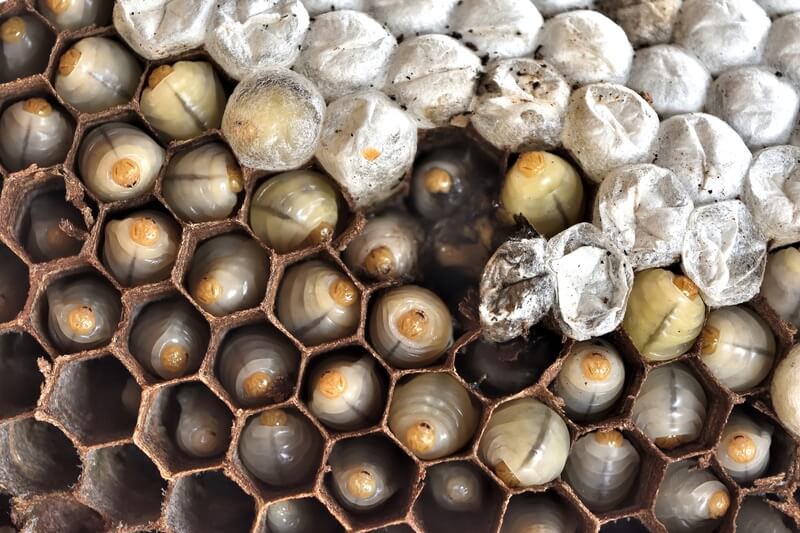
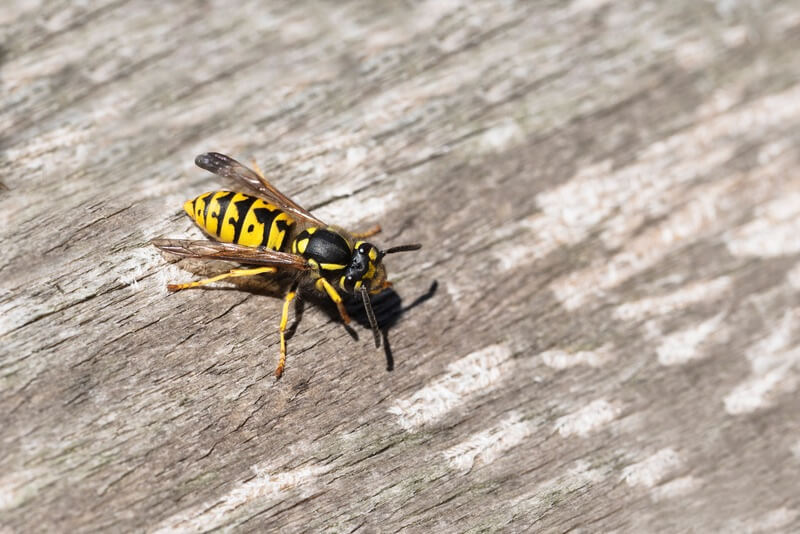
As we said earlier, baby wasps that are about to become adults essentially look like small wasps. Pretty straightforward!
Conclusion
Now that you know what baby wasps look like and how you can recognize what stage they are in their life cycle, it will be far easier to assess the general pest situation at your home.
Knowledge is everything!
